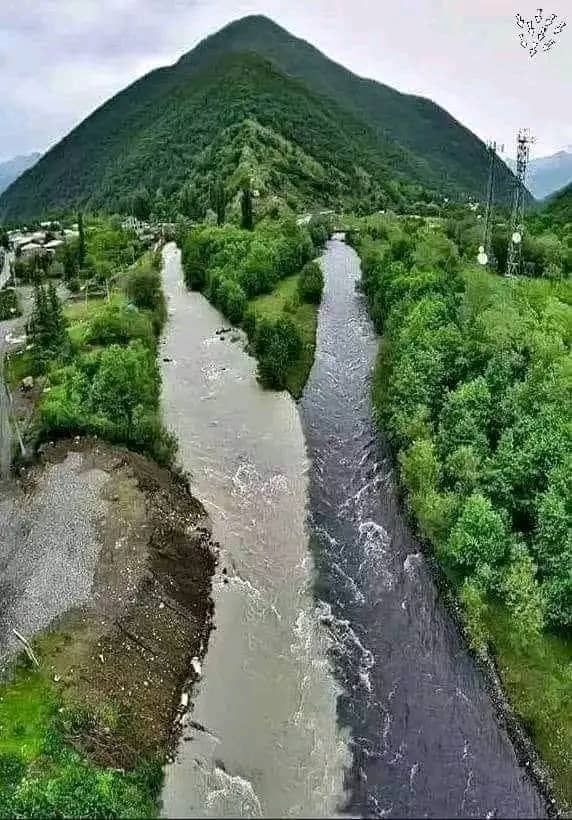The Aragvi River system in Georgia is home to a mesmerizing natural phenomenon – the meeting of the white Tetri Aragvi and the black Shavi Aragvi.
These two distinct rivers, flowing from the southern slopes of the Caucasus Mountains, converge at the town of Pasanauri, yet their waters refuse to mix.
The reason behind this striking visual is the difference in the rivers’ composition, density, and temperature. The Tetri Aragvi, originating from Gudauri, carries a high concentration of sediments, giving it a milky-white appearance. In contrast, the Shavi Aragvi, flowing from the Gudamakari region, is rich in organic matter, imparting a dark, almost black, hue to its waters.
As the two rivers meet, their varying properties create a natural barrier, preventing the colors from blending.
This unique interaction continues as the combined Aragvi flows south, eventually joining the Mtkvari (Kura) River near the ancient capital of Mtskheta.
READ ALSO: The Triple Frontier: Where Three Countries Converge at the Confluence of Rivers
From the Jvari Monastery overlooking Mtskheta, visitors can witness the captivating sight of the Aragvi’s white and black waters converging, yet maintaining their distinct identities.
This natural wonder has inspired local legends, with the story of two sisters, one fair-haired and the other dark-haired, who fell in love with the same knight.
The Aragvi River system plays a vital role in Georgia’s infrastructure, with the Zhinvali Dam and its 130 MW hydroelectric power station generating a significant portion of the country’s electricity. The river’s waters also provide drinking water to Tbilisi and irrigate nearby agricultural fields.
This unique natural phenomenon, where two rivers meet but refuse to mix, has captured the imagination of travelers and nature enthusiasts alike.
The Aragvi’s captivating display of contrasting colors is a testament to the wonders of the natural world and a must-see destination for anyone visiting Georgia.

